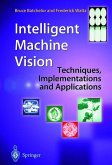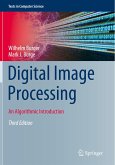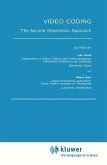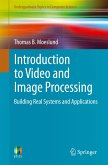This book provides an introduction to the processing of hexagonally sampled images, includes a survey of the work done in the field, and presents a novel framework for hexagonal image processing (HIP) based on hierarchical aggregates.
The strengths offered by hexagonal lattices over square lattices to define digital images are considerable:
- higher packing density
- uniform connectivity of points (pixels) in the lattice
- better angular resolution by virtue of having more nearest neighbours
- superlative representation of curves
The utility of the HIP framework is shown by implementing several basic image processing techniques (for the spatial and frequency domain) and some applications. Theory and algorithms are covered as well as details such as accommodating hardware that support only images sampled on a square lattice. A CD-ROM provides code enabling the reader to develop and test algorithms for processing hexagonal images.
This fresh approach offers insight and workable know-how to both researchers and postgraduates.
The strengths offered by hexagonal lattices over square lattices to define digital images are considerable:
- higher packing density
- uniform connectivity of points (pixels) in the lattice
- better angular resolution by virtue of having more nearest neighbours
- superlative representation of curves
The utility of the HIP framework is shown by implementing several basic image processing techniques (for the spatial and frequency domain) and some applications. Theory and algorithms are covered as well as details such as accommodating hardware that support only images sampled on a square lattice. A CD-ROM provides code enabling the reader to develop and test algorithms for processing hexagonal images.
This fresh approach offers insight and workable know-how to both researchers and postgraduates.
From the reviews:
"Middleton and Sivaswamy have attempted to provide a comprehensive survey of the existing literature and a sound theoretical basis for using hexagonal sampling in image processing. ... By covering all of the areas of image processing that a basic image processing text would cover, the authors have succeeded in providing a good reference and a framework for students interested in processing images using hexagonal sampling. The authors provide several examples of advantages of processing using the hexagonal sampling grid over a square sampling grid." (Gopinath Kuduvalli, Computing Reviews, December, 2006)
"Middleton and Sivaswamy have attempted to provide a comprehensive survey of the existing literature and a sound theoretical basis for using hexagonal sampling in image processing. ... By covering all of the areas of image processing that a basic image processing text would cover, the authors have succeeded in providing a good reference and a framework for students interested in processing images using hexagonal sampling. The authors provide several examples of advantages of processing using the hexagonal sampling grid over a square sampling grid." (Gopinath Kuduvalli, Computing Reviews, December, 2006)








